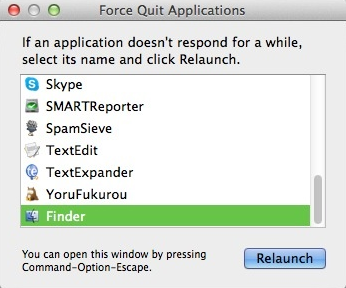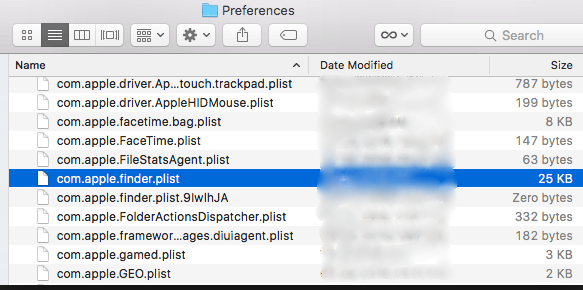How to fix Finder when it is not working on Mac
- Jul 17, 2019
User report 1: Finder becomes unresponsive every time I try to empty the trash.
User report 2: Finder works oddly after I update to OS Mojave. How to correct this?
User report 3: My Finder shows “not responding” so I have to force quit and relaunch it. But after a period it goes to “not responding” state again. How can I get rid of this problem on my Mac?
Have you encountered any of the issues raised above? How do you deal with the situation when Finder does not respond to the command you give? In this post we summarize several troubleshooting tips if your Finder does not function normally.
1.Relaunch Finder
To force quit Finder and relaunch it, you can try the following options:
1). Right click on Finder icon in Dock, and choose Relaunch option
2). Press CMD (Command) + Options + Esc keys together to activate the Force Quit Applications window, then select Finder in the list and click Relaunch button

3). Click to make Finder the frontmost app first, hold down Shift key, then click to open Apple menu, and select Force Quit Finder from the menu
4). Launch Activity Monitor through Spotlight or from the /Applications/Utilities folder, select Finder, click the X icon on the top left, and choose Quit option

2.Log in and out
If the relaunch does not fix the “freeze/crash” problem, try to log out and log in to your Mac again. To do so, click the Apple menu and choose Log Out. Before that, don’t forget to save your work. And then log back in after a few seconds of waiting.
If the problem persists, reboot your Mac instead, to see if you get the same result.
3.Delete .plist file
Either relaunching Finder or rebooting mac fails to fix the unresponsive issue? The problem may be worse than you think. Your Finder’s preferences file may get corrupted, and the fix is to delete this file. Here is how to do if you access Finder:
- Open up a Finder window, click Go menu and choose Go to Folder option
- Type ~/Library/Preferences in the box, and click Go button to open it up
- Locate the file named “com.apple.finder.plist” and move it to Desktop temporarily

What if you cannot access Finder as it has been unresponsive? Try the Terminal:
- Launch Terminal via Spotlight or from the /Applications/Utilities folder
- Copy and paste the following command into the window, and hit Enter/Return key
mv ~/Library/Preferences/com.apple.finder.plist ~/Desktop/
Restart your Mac, and when Finder launches at startup, the preference files will generate automatically. If your Finder functions normally after deleting the corrupted file, you can head to adjust the customization you had set to preferences again.
If your problem is associated with Finder’s sidebar, you can also remove the sidebar preference file named “com.apple.sidebarlists.plist” in the same system directory.
Having other problems regarding to Finder or macOS? Let us know so we can help.
Popular Posts
- What Kind of Programs do You Think are Necessary in Windows 10?
- What’s SpyHunter and How to Fix the File Being Quarantined
- How to Forcibly Remove a Program That Won’t Uninstall in Windows
- 3 Tips to Remove a Program that Won’t Uninstall
- How To Uninstall Applications On Windows 10 – Program Removal Guides
- Tutorial: How to Remove & Uninstall Programs / Applications on Windows 7
Comments
You must be logged in to post a comment.